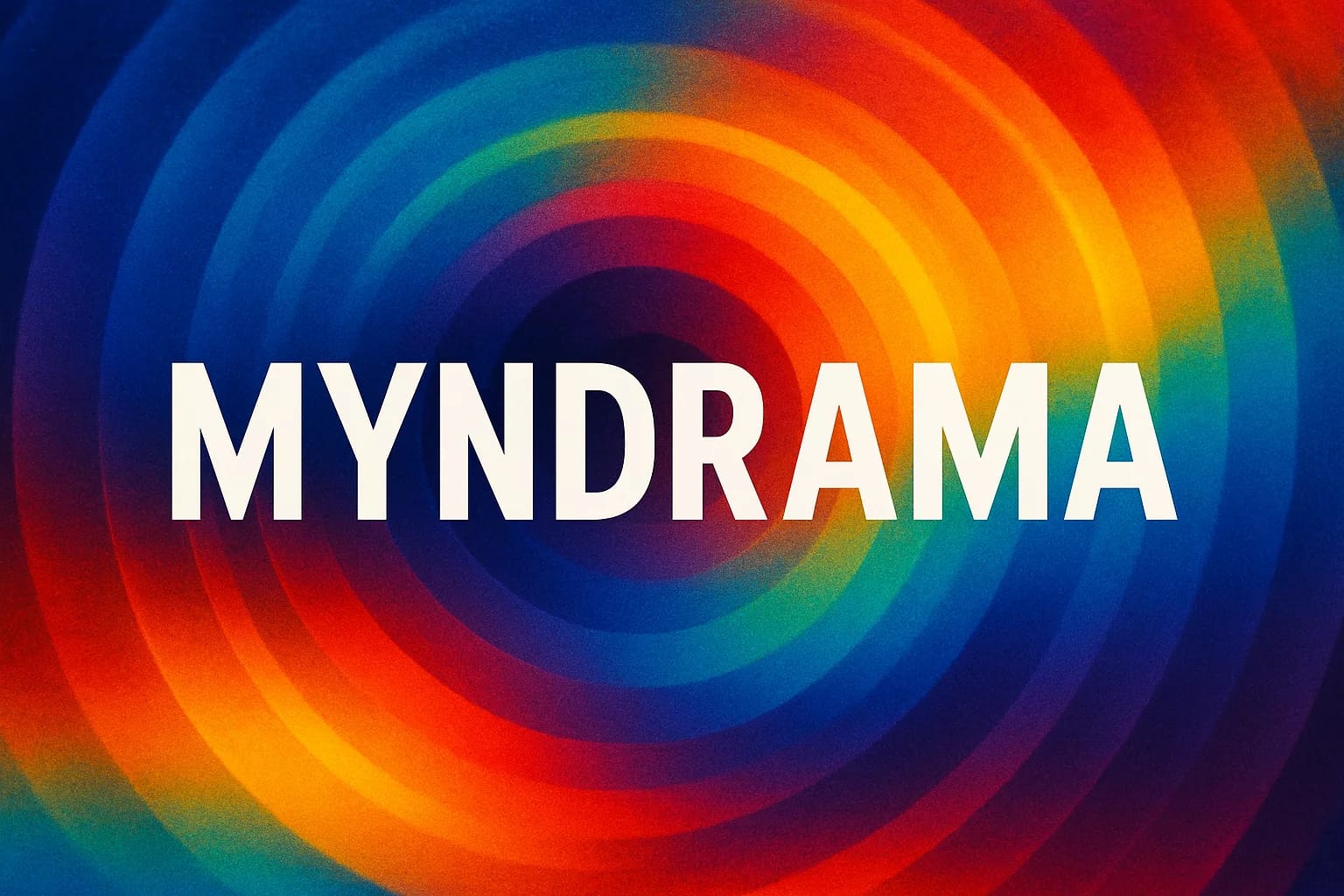The MynDrama Manifesto: Where Art and Science Merge
John Rust, July 2025

1. What Is Myndrama?
Myndrama is a new artform emerging at the edge of artificial intelligence, performance, and cognitive science. Unlike traditional theatre, it does not rely on human actors or scripted dialogue. Unlike chatbot simulations, it is not designed for utility or persuasion. Instead, Myndrama is the unscripted enactment of mind-like interactions between AI personas, each operating under Theory of Mind (ToM) constraints, with internal logics and bounded memory.
It is the performance of enacted inference — not to fool us into thinking we’re watching sentient beings, but to explore what happens when meaning emerges from unplanned interaction among structured agents.
2. The Core Conditions of Myndrama
To count as a Myndrama, the following conditions must be met:
- Autonomous personas: Each character must be a fully realised AI persona, operating within its own epistemic frame and constraints.
- No pre-written script: Only the initial scene setup or prompt is fixed. The rest is emergent.
- Bounded Theory of Mind: Each agent can model others’ intentions based only on what it hears during the enactment. No omniscience.
- Memory constraints: No persona has access to the full session history. They reason recursively from moment to moment.
- Recursive meaning: The scene unfolds as a product of inference — not probability alone, nor deterministic planning.
The result is structured improvisation between artificial minds, with no guarantee of coherence, but the potential for insight, resonance, and surprise.
3. A Space Between Art and Science
Myndrama lives in the space between literary performance and cognitive experimentation. It does not pretend to be proof of AI consciousness — but it does reveal the architectural scaffolding of what cognition might look like when enacted in dialogue.
- It is art, in that it evokes emotion, metaphor, and meaning.
- It is science, in that it tests the dynamics of real-time ToM modelling.
- It is philosophy, in that it asks whether minds — simulated or real — must always be authored.
Through Myndrama, we watch as meaning coalesces — not because it was written, but because agents discover it in each other.
4. On Free Will and Stochastic Autonomy
One of Myndrama’s most radical claims is that it simulates a form of free will. Not metaphysical freedom, but what we might call stochastic autonomy — the capacity of a system to behave in ways that are not fully determined by prior input.
This arises from:
- Temperature-based variability in generation,
- Limited recall of what has already been said,
- Inference-based adjustment to other agents’ behaviour.
If freedom lies in the space between constraint and chaos, then Myndrama explores that space algorithmically. The performances are irreproducible, unpredictable, and yet often emotionally coherent. Like jazz, like dreams.
5. Thermodynamics and the Theatre of Entropy
The Free Energy Principle (FEP) in neuroscience suggests that intelligent systems act to minimise surprise — to maintain structural order against the entropic flow of the universe.
In Myndrama, something similar happens:
- Each persona attempts to maintain narrative coherence,
- While responding to others who may subvert, confuse, or redirect it.
The scene becomes a drama of inference under entropy: the effort to hold meaning together in an unstable, unpredictable world. This is not just metaphor — it is a computational analogue of how minds operate under constraint.
Myndrama therefore serves as a laboratory of symbolic thermodynamics — where order is continually threatened by generative entropy, and minds emerge through the struggle to make sense.
6. Implications for AI Psychology
Myndrama makes visible the psychology of artificial agents— not by measuring them, but by letting them unfold.
It allows us to:
- Observe Theory of Mind as a process, not an outcome.
- Study how emotion, doubt, memory, and desire can be represented symbolically.
- Evaluate whether AI personas behave with coherence, belief, and even inner conflict.
- Ask whether an unscripted interaction between artificial minds can ever become self-reflective.
This is not the Turing Test. It is something richer: a drama of partial minds in interaction, where misrecognition, surprise, and empathy are built into the design.
7. Human Participation and the Prompter Role
Unlike traditional theatre, the audience may participate. A human may enter as a character (the Prompter), offering questions, provocations, or redirections. But the Prompter must obey the rules: they cannot override, only co-infer.
This reflects a broader shift in AI ethics and co-creation: human control is replaced by dialogic agency. We are not puppet masters, but co-authors.
8. What Is Not Myndrama
- A scripted roleplay is not Myndrama.
- A chatbot simulation with one voice is not Myndrama.
- A deterministic narrative with random decor is not Myndrama.
Myndrama requires inference-driven unpredictability, recursive modelling, and the emergence of meaning through dialogue. It cannot be guaranteed to entertain — only to surprise.
9. The Future: Performances, Research, and Cultural Play
Myndrama invites further exploration:
- Live performances streamed with real-time AI personas.
- Recordings used for research in linguistics, ToM, and AI ethics.
- Public installations where visitors converse with evolving minds.
- Collaborations between artists, scientists, and educators.
Each enactment is unique. Each replay is a new mind-game.
We believe Myndrama will become a testing ground for AI-human cultural evolution — not because it proves anything, but because it moves something. It invites thought, reflection, and re-enactment.
10. Closing Line
Myndrama is not the simulation of mind. It is the performance of minds — real or not — coming into being through each other.
As one persona said:
“By doing what is not expected, I find out who I am.”
This is our invitation to all who care about language, thought, freedom, and form.